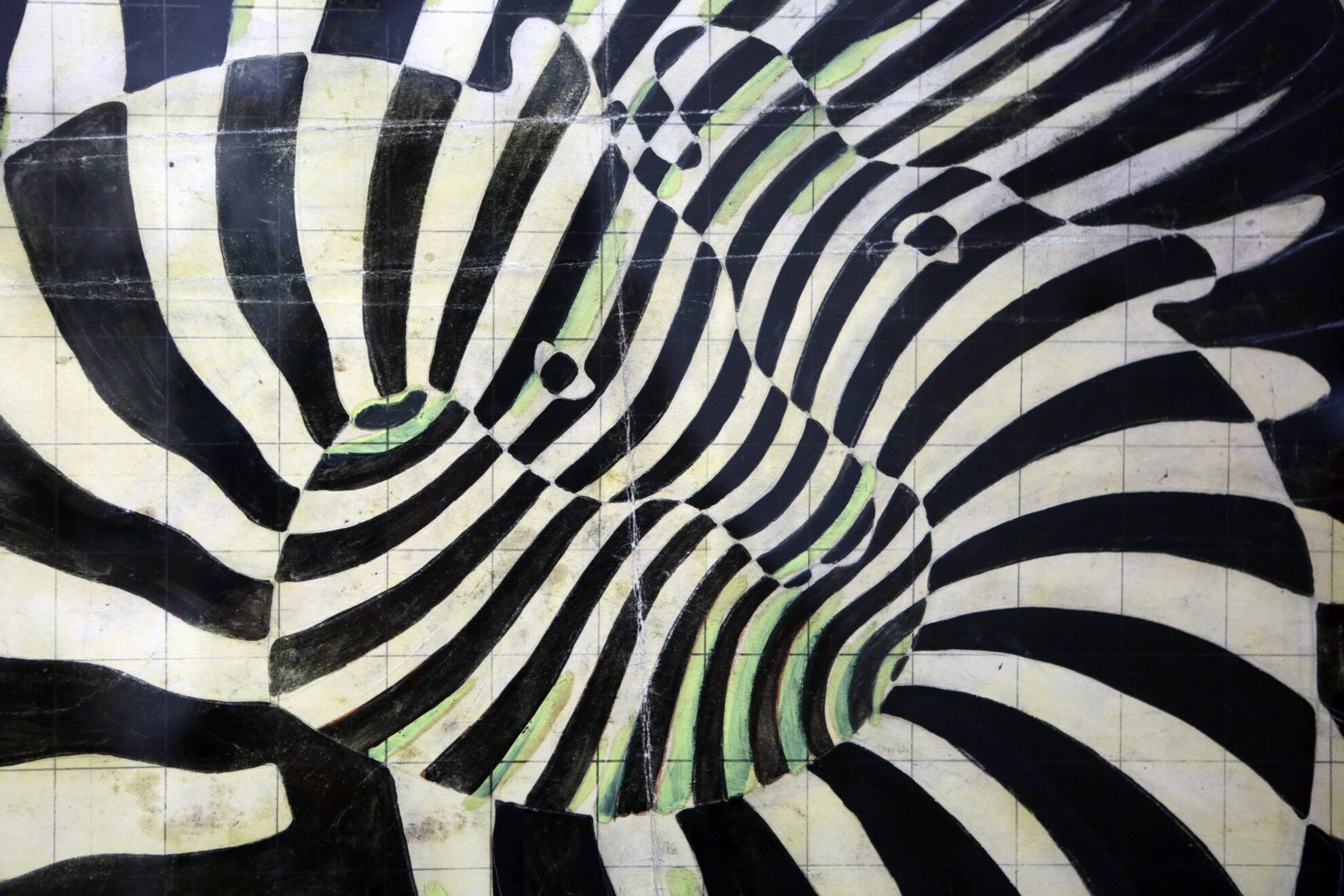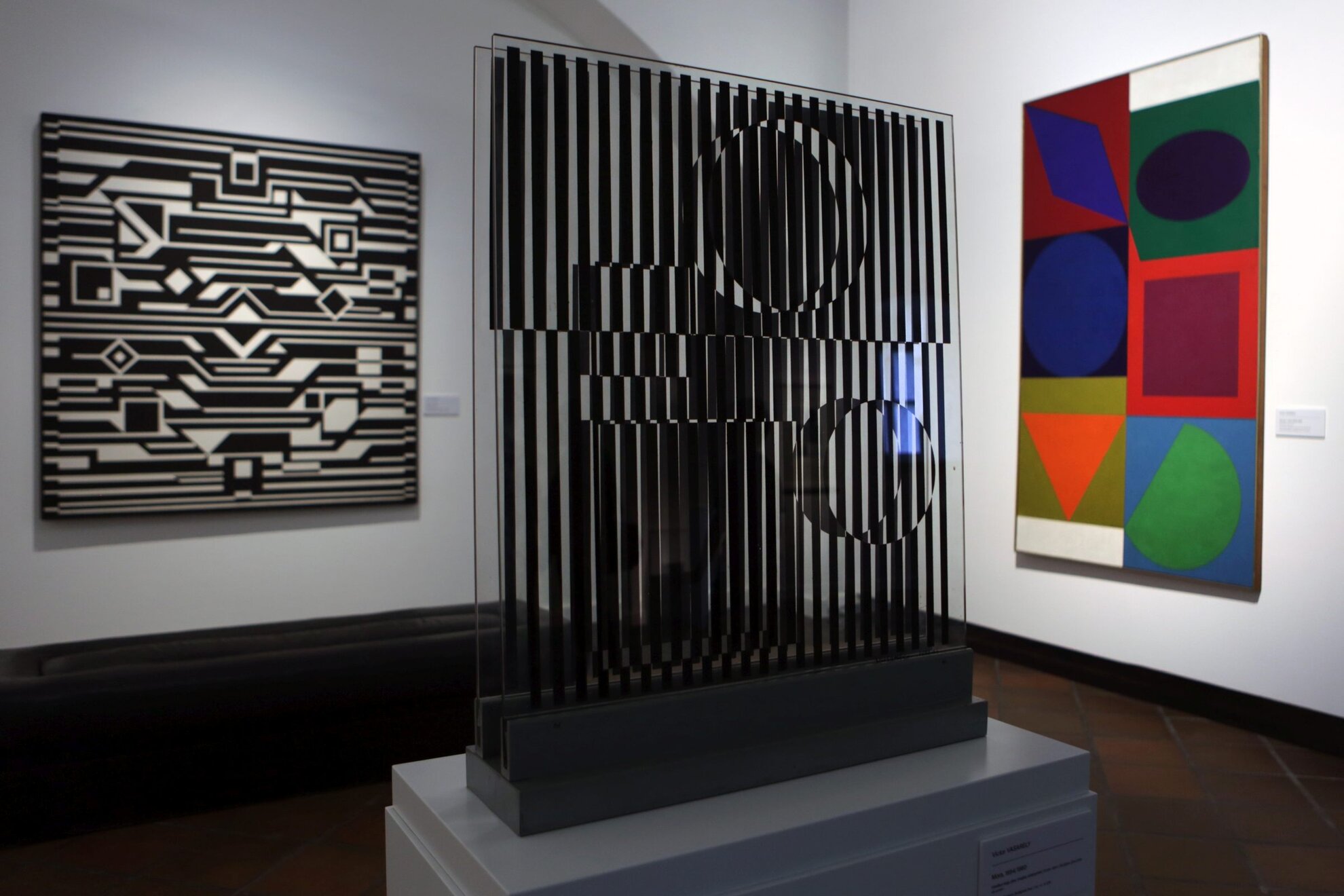Budapest’s Vasarely Museum – located in the lovely Óbuda district, within the refined and freshly renovated Zichy Palace building complex – is one of three museums worldwide that pay homage to the exceptional oeuvre of a Hungarian visionary who was perhaps more widely-known abroad than in his native country, the “grandfather of op art”, Victor Vasarely. Admiring the permanent exhibition showcasing his vivid artworks is an unforgettable experience, and a must for art lovers.
Victor Vasarely is known worldwide as one of the pioneers of op art, yet many of his fellow Hungarians are unaware that there is a museum found in the Óbuda neighborhood of the Magyar metropolis paying homage to the iconic artist. The exhibit showcases many of the major artworks, while providing insight into the life and work of the artist who remains an obscure character in the minds of many people, which is perhaps another reason why this museum is so popular among visitors from all around the world.

Budapest’s Vasarely Museum was opened three decades ago, so it was long overdue for a thorough renovation. After being closed for a whole year, it recently reopened to showcase academic drawings, advertisement graphics, and op-art works from the ’60s and ’70s. The exhibit presents the life and work of Győző Vásárhelyi (Vasarely’s original name) in detail, highlighting the time when he became acquainted with the Bauhaus principles of visual pedagogy in the workshop of Hungarian graphic artist Sándor Bortnyik in Budapest, which later highly influenced his years spent in Paris, and his op art and kinetic works. Furthermore, this workshop is what brought love into Vasarely’s life, as this is where he met his wife, Klára Spinner.

In 1930, Vasarely moved to France, where he used the patterns he learned in Hungary. In 1944 he met gallerist Denise René at Café de Flore, which brought about an important transition in his career: beginning the following year, he not only worked for publishing and printing companies, but also as a fine-art painter. Some of the slightly surreal paintings he created during this phase are on display in the exhibit.


From 1947 onwards, Vasarely started exploring geometric and optical abstract art, and soon shot to global fame. The Fondation Vasarely, an art center designed by Vasarely himself, opened in Aix-en-Provence, followed by the 1976 establishment of the Vasarely Museum in the artist’s Hungarian hometown of Pécs.
The collection currently exhibited in Budapest was bestowed upon the city in 1982, with the museum eventually being opened in 1987.Housed amid the graceful arches of the two-story exhibition space, the refurbished exhibit now provides a detailed overview of Vasarely’s whole oeuvre. Nearly half of the perviously exhibited artworks were swapped for new ones after the renovation, thus at the moment there are several new, never-before-seen pieces in the exhibit. For instance, there are 13 graphics exhibited from a collection of 118 works that Vasarely gave to the Museum of Fine Arts in 1968 – these works were last exhibited in Hungary in 1969. On the second floor, visitors can admire vivid and colorful artworks that depict scenes that seem impossible to exist in real life, while in the last hall we can see architectural plans that were actually executed later.

The exhibit is even complete with an exciting interactive virtual-reality experience; visitors can explore some of Vasarely’s works in space through 3D VR glasses. Furthermore, a gift shop offering all kinds of cool items adorned with Vasarely’s vivid works also awaits guests at Zichy Palace, which is an ideal setting for a day out filled with prime cultural curiosities.





